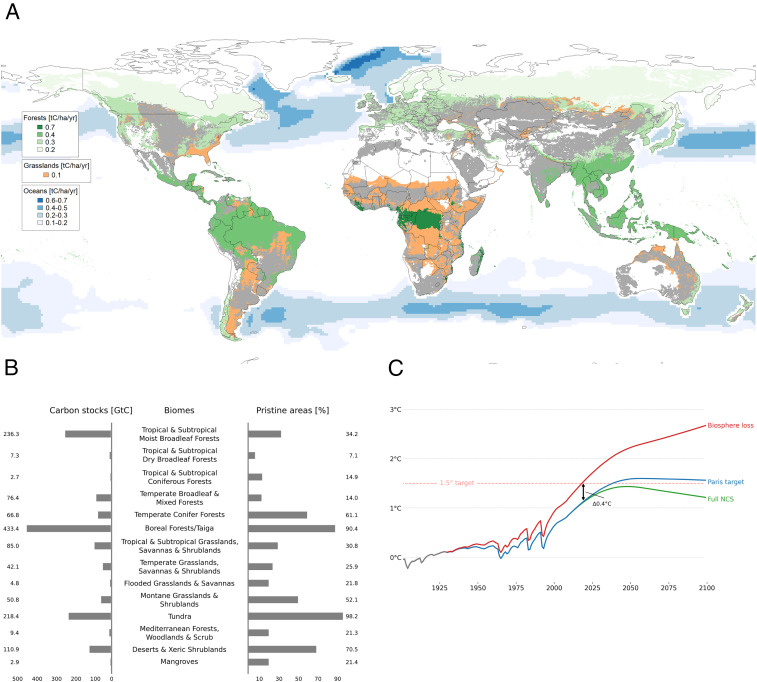Fig. 1.
(A) Carbon sinks in major biomes (SI Appendix, Table 1). Grey areas indicate regions dominated by agriculture. (B) Carbon stocks in vegetation and soils in major biomes and the share of each biome remaining intact today (SI Appendix, Table 1). (C) Global average temperature changes relative to pre-industrial levels under RCP2.6, where the pathway meeting the “Paris target” is the standard RCP2.6 simulation. “Biosphere loss” shows global temperature change without land carbon sinks from 1900. The Δ0.4 °C arrow shows the estimated dampening effect up until today from land-based ecosystems. “Full NCS” assumes large-scale restoration of land-based natural carbon sinks in forests, grasslands, peatlands, and wetlands, as well as avoided future ecosystem degradation, amounting to total emission reductions of 4.6 GtC per year after 2030 (SI Appendix, Methods for details).

